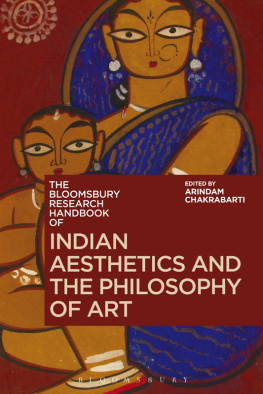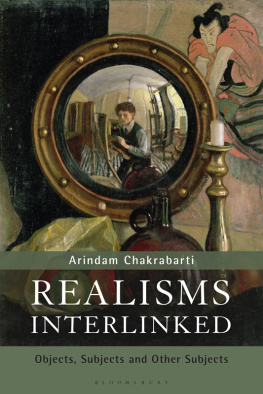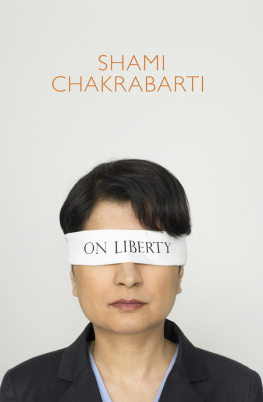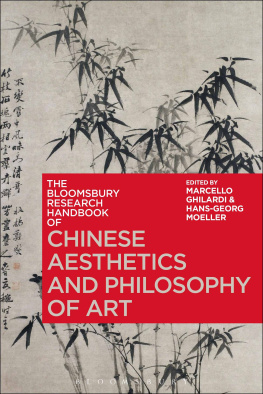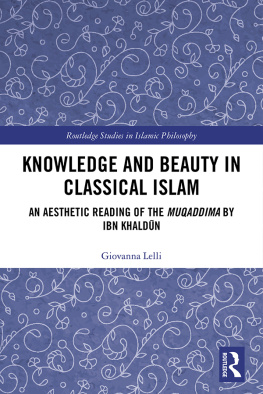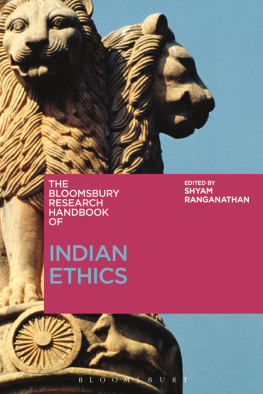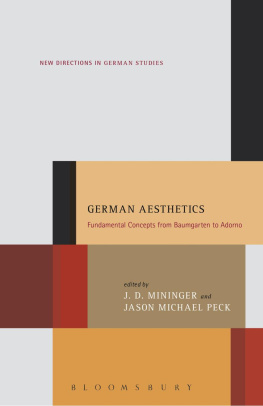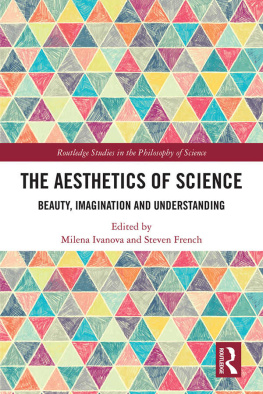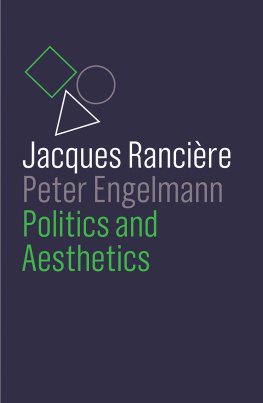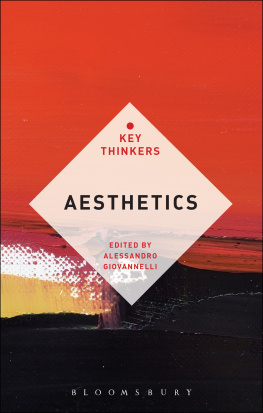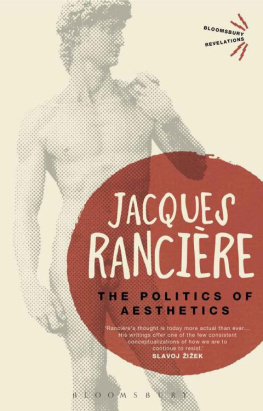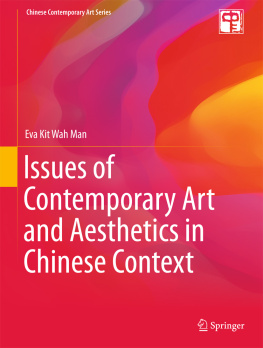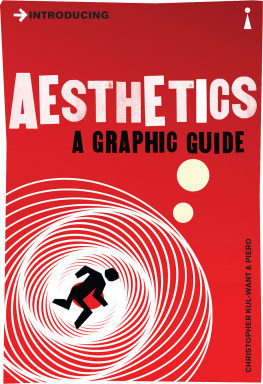THE BLOOMSBURY RESEARCH HANDBOOK OF
INDIAN AESTHETICS AND THE PHILOSOPHY OF ART
BLOOMSBURY RESEARCH HANDBOOKS IN ASIAN PHILOSOPHY
Series Editors:
Chakravarthi Ram-Prasad, Lancaster University.
Sor-hoon Tan, National University of Singapore.
Editorial Advisory Board:
Roger Ames, University of Hawaii; Doug Berger, Southern Illinois University; Carine Defoort, KU Leuven; Owen Flanagan, Duke University; Jessica Frazier, University of Kent; Chenyang Li, Nanyang Technological University; Ronnie Littlejohn, Belmont University; Evan Thompson, University of British Columbia.
Series description:
Bringing together established academics and rising stars, Bloomsbury Research Handbooks in Asian Philosophy survey philosophical topics across all the main schools of Asian thought. Each volume focuses on the history and development of a core subject in a single tradition, asking how the field has changed, highlighting current disputes, anticipating new directions of study, illustrating the Western philosophical significance of a subject and demonstrating why a topic is important for understanding Asian thought.
From knowledge, being, gender and ethics, to methodology, language and art, these research handbooks provide up-to-date and authoritative overviews of Asian philosophy in the twenty-first century.
Forthcoming titles:
The Bloomsbury Research Handbook of Chinese Philosophy Methodologies,
edited by Sor-hoon Tan
The Bloomsbury Research Handbook of Chinese Philosophy and Gender,
edited by Ann A. Pang-White
The Bloomsbury Research Handbook of Indian Epistemology and Metaphysics,
edited by Joerg Tuske
The Bloomsbury Research Handbook of Indian Ethics, edited by Shyam Ranganathan
The Bloomsbury Research Handbook of Indian Philosophy and Gender,
edited by Veena Howard
THE BLOOMSBURY RESEARCH HANDBOOK OF
INDIAN AESTHETICS AND THE PHILOSOPHY OF ART
Edited by Arindam Chakrabarti
Bloomsbury Academic
An imprint of Bloomsbury Publishing Plc

CONTENTS
Lawrence McCrea
Priyadarshi Patnaik
Parul Dave-Mukherji
Mukund Lath
Nrisinha Prasad Bhaduri
Bijoy H. Boruah
Arindam Chakrabarti
Sudipta Kaviraj
Sibaji Bandyopadhyay
B. N. Goswamy
David Shulman
Rimli Bhattacharya
Kazi Khaleed Ashraf
Gopal Guru
Tapati Guha-Thakurta
Moinak Biswas
Tridip Suhrud
Gayatri Chakravorty Spivak
Now (he) glorifies the arts... the arts are refinement of the self (tma-samskti). With these the worshipper recreates his self that is made of rhythms/metres
Aitareya Brahmana, 6;27, ca. 1000 BCE
Sometimes dharma (moral virtue), sometimes play, sometimes politics and wealth, sometimes tranquility, sometimes laughter, sometimes battle, sometimes lust, sometimes killing... theater sings-after the essence (bhvnukrtanam) of all things in all the three worlds... Such theater shall produce repose and relief for those who are laden by misery, exhausted with labor, distraught with grief, or stricken with ascetic austerities. There is no such branch of knowledge, no craft, no science, no fine art, no yoga, no ritual action which is not seen in this theater.
Nyastra, 1.108116, ca. first-century CE
The ability to experience the tension between the inner and the outer worlds is what we call talent.
Benodebehari Mukherjee, 1979/2006
Not so much beautiful or lovely, as amazing and awesome. This latter pair of currently popular interjections seems to express aesthetic experience, as theorized by classical and contemporary Indian philosophies of art more accurately than the former pair. One is thus tempted to overstate the case for a perennial contemporariness of Indian aesthetics. True, from early centuries of the common era, one comes across a list of eight or nine major art-emotions or dominant aesthetic affects. These are: love, pathos, laughter, rage, fear, valor/ heroism, wonder, disgust, and, added later on, tranquility or serenity. Wonder seems to be just one among them. And individual philosophers of artsuch as Bhojadeva or Abhinavaguptahave tried to reduce or subjugate all of them to the first (erotic love) or the last (tranquil peace), rarely calling adbhuta (the awesome) the mother or quintessence of all aesthetic modes. Yet the crucial common feature of classical or modern, Sanskrit or vernacular Indian poetry or theater has been camatkraan intersubjectively relishable sense of amazement. Great poetry, music, painting, or sculpture is neither born of nor does it evoke ordinary pleasure or fun. A dance may delight us. We may enjoy a song. But what is more marvelous and remarkable is the aesthetic phenomenon described in both East and West, as the awe-inspiring talent of the artist/poet, which turns our saddest experiences to our sweetest ones, our horrors into the awesome sublime. The object or event depicted or narrated or enacted may be extremely ordinary, as in the love-request (from GitaGovinda) If you please speak even a little bit, the moonbeams of a flash of your teeth removes the terrible darkness of this cavern (vadasi yadi kim cid api/ danta-ruci kaumudi/ harati dara-timiram ati ghoram). What fills us with awe, when the original Sanskrit song is sung in the proper Raaga, is not the speaking or the glimpse of someones clean teeth or the dark cave that is lit up, but how the familiar sounds and meanings manage to suddenly suggest to our imagination the surplus meaning of the entire story of an unbearable silence of sulk that must have preceded these imploring words, and the dreary sadness that has enveloped the heart (cavern) of the lover who is coaxing the lady to flash the light of her pardoning words.
To take a more contemporary early twentieth-century example, the Tagore song, supposed to be sung in a fast tempo, which starts with the lyrics In which tune, in which restless rhythm, is my lute sounding today? ascends to a high-pitched crescendo with the following words of amazement at the vibrancy of the verdant grass:
Its the hope of touching no one knows whose feet/
That makes each blade of grass with words replete.
(kr pada-paraana / trine trine arpilo bh//)
The tactile eagerness of the whisper-effect created by the originals p and s sounds, evoking the startling metaphor of blades of grass garrulous with the thrill of prospective foot-steps is created by the series of queries Which? Whose?, thickening the sense of wonder at the humdrum seasonal changes of the earth. The ripples of that awesome magic of sounds and images keep reaching many resonating hearts. Poetry, music, or art begins when the utterer, singer, imitator/ re-presenter, or artist is self-startled by the work or utterance prompted by unselfish pathos or empathic stirring of the heart. The first poet, according to Sanskrit literary lore, was stricken by pity and outrage when a hunter killed with a lethal arrow a desire-inebriated red-crested bird, which was happily flying about with its partner until its love-flutter was rudely interrupted. As the sage Vlmik, the would-be author of Rmyaaitself an epic saga of interrupted love of a divine couplecursed the hunter, words rolled off his lips in four evenly measured quarters. Noticing the singable cadence of his own words he blurted out in amazement:

